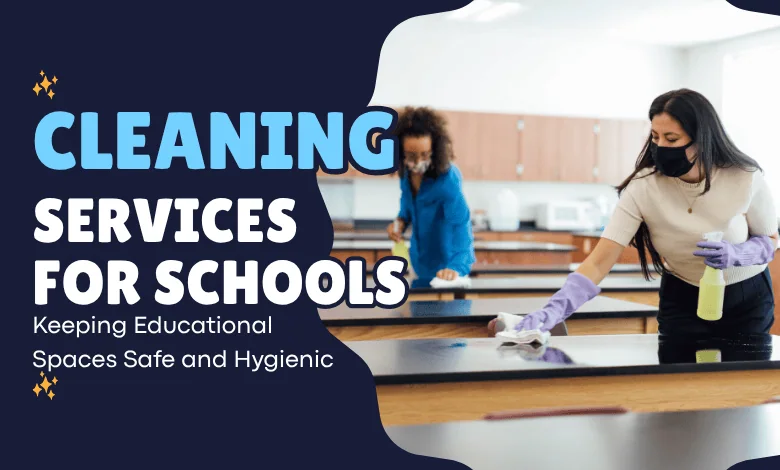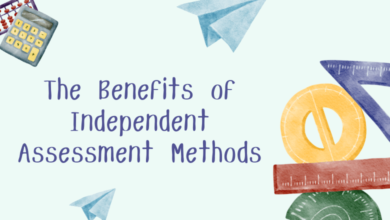Essential Cleaning Services for Schools: Keeping Educational Spaces Safe and Hygienic
The Importance of a Clean Learning Environment

Why Hygiene Matters in Education
In the realm of education, the significance of maintaining a hygienic environment cannot be overstated. Schools serve as a hub for children, and with that vibrancy comes the potential for the rapid spread of infections and illnesses. Research indicates that schools are breeding grounds for germs, given their close-contact settings where children share spaces, supplies, and even personal items. Thus, implementing stringent hygiene practices is paramount. Proper hygiene not only minimizes the risk of illness but also fosters an environment conducive to learning. When students are healthy, attendance rates improve, directly impacting academic performance and overall morale. Schools that prioritize cleanliness send a powerful message that they value the health and well-being of their students, which can bolster community trust and support.
The Connection Between Cleanliness and Academic Performance
The relationship between cleanliness and academic performance is backed by numerous studies suggesting that ambient conditions significantly affect cognitive function and learning outcomes. A clean and well-organized classroom can lead to improved focus, reduced distractions, and heightened engagement among students. Conversely, an unkempt environment can lead to increased anxiety and stress levels, inhibiting a child’s ability to absorb and retain information. Notably, research illustrated by the Harvard School of Public Health emphasizes that students in cleaner schools exhibit higher academic achievements. Therefore, from a logistical perspective, investing in cleaning services is not merely a matter of hygiene; it is a strategic move toward enhancing educational performance.
Understanding Health Regulations and Standards for Schools
Educational institutions must adhere to strict health regulations and standards set forth by local, state, and federal authorities. These guidelines encompass everything from proper waste disposal to maintaining air quality. For example, the Occupational Safety and Health Administration (OSHA) provides specific mandates regarding sanitation in public schools, helping to ensure a safe learning environment. Non-compliance with these standards can lead to dire consequences, including fines and, more importantly, health risks for students and staff. Regular audits and inspections help schools remain compliant with these regulations, fostering an atmosphere that prioritizes safety. Hence, understanding and implementing these health regulations is crucial for school administrators who are charged with safeguarding their students’ health.
Comprehensive Cleaning Services Tailored for Schools
General Cleaning vs. Specialized Services: What’s the Difference?
When it comes to cleaning services for schools, it’s essential to distinguish between general cleaning and specialized services. General cleaning typically includes daily tasks such as sweeping, mopping, dusting, and waste disposal. These activities lay the foundation for a clean environment but may not address specific issues that could arise. Specialized services, on the other hand, might involve deep cleaning, sanitization, carpet cleaning, or even pest control. Such services are essential in addressing niche cleaning needs that arise from the unique context of schools. For instance, a vacant classroom after summer recess may demand a more thorough cleaning to ensure it is fresh and sanitized before students return. Understanding the local context and specificity of cleaning needs allows school administrations to make informed choices about the services they require, ensuring optimized cleaning efforts.
Eco-Friendly Cleaning Products: Safer for Students and the Planet
As educational institutions become increasingly aware of their environmental footprint, the shift toward eco-friendly cleaning products is gaining traction. Traditional cleaning products often contain harsh chemicals that not only compromise indoor air quality but can also pose health risks to children. In contrast, eco-friendly products are formulated to be safer for both human health and the environment, utilizing natural ingredients that are less likely to trigger allergies or other adverse reactions. Schools that implement green cleaning practices not only protect their students but also educate them about sustainability and environmental stewardship. Additionally, using eco-friendly products can enhance a school’s reputation, attracting parents who are keen on entrusting their children to institutions that prioritize health and ethics. Adopting these practices signifies a commitment to the well-being of both students and the planet.
Innovative Cleaning Techniques: Beyond the Broom and Bucket
In an age where technology is rapidly evolving, the cleaning industry is not far behind. Innovative cleaning techniques, such as the use of electrostatic sprayers, UV sterilization, and robotic cleaning devices, are transforming the way schools approach hygiene. Electrostatic sprayers enable even distribution of disinfectant on surfaces, reaching hard-to-access areas that manual cleaning might miss. UV sterilization utilizes short-wavelength ultraviolet light to kill germs and pathogens effectively, ensuring a germ-free environment. Furthermore, robotic cleaners are becoming increasingly popular in schools due to their efficiency and ability to cover vast areas without the constant need for human oversight. These methods not only enhance the efficacy of cleaning routines but also save time and reduce labor costs, allowing staff to focus on other essential responsibilities within the educational ecosystem.
High-Traffic Areas: Where Cleaning is Critical
Restrooms: Tackling Tough Germs and Odors
Restrooms are often cited as one of the most challenging areas in any school environment, presenting unique hygiene challenges due to their high usage and potential for germ accumulation. Bacteria thrive in damp environments, making regular and thorough cleaning paramount. Advanced restroom cleaning practices include the use of antimicrobial surface finishes and touchless fixtures, which minimize contact and thus reduce germ transfer. Regular inspections and restocking of hygiene supplies, such as soap and paper towels, are also critical components of restroom management. Additionally, implementing a system for immediate reporting and remedial action upon discovering issues can significantly boost cleanliness perception among students and staff. Schools must prioritize restroom hygiene not only for health reasons but also to instill a sense of pride and responsibility among their student body.
Classrooms: Creating a Focus-Friendly Atmosphere
Classrooms serve as the primary learning environment for students, and their cleanliness can significantly influence learning outcomes. Dust, allergens, and general clutter can be distracting and may exacerbate issues, particularly for students with allergies or respiratory conditions. Therefore, it is vital to establish a routine cleaning protocol that includes daily dusting, vacuuming, and disinfection of frequently-touched surfaces such as desks, doorknobs, and shared equipment. Moreover, incorporating strategies like the decluttering of common areas and the effective organization of supplies can enhance the aesthetic quality of classrooms, thereby fostering a positive learning atmosphere. Teachers and students alike should be encouraged to participate in maintaining this environment through initiatives such as ”clean-up days” or educational segments on personal responsibility concerning cleanliness.
Cafeterias and Gyms: Ensuring Health in Popular Gathering Spots
Cafeterias and gyms represent two of the most frequented spaces within schools, serving not only as hubs for physical activity but also as social gathering points. These high-traffic areas require specialized cleaning protocols tailored to their unique conditions. In cafeterias, the risk of foodborne illnesses underscores the importance of adhering to strict sanitation standards. This includes regular cleaning of food prep areas, dining surfaces, and waste management systems. In gyms, proper cleaning routines should prioritize equipment sanitation, flooring, and changing areas, ensuring a safe environment for physical activity. Implementing educational initiatives about hygiene practices among students, such as handwashing before meals and appropriate gym etiquette, can further enhance overall cleanliness and health consciousness. Ultimately, delivering a clean, safe, and hygienic experience in these areas underpins not just health but also fosters community spirit and cooperation amongst students.
Engaging Stakeholders in School Cleaning Initiatives
Getting Staff and Students Involved in Cleanliness Efforts
One of the most effective strategies for maintaining cleanliness in schools is to actively involve staff and students in cleanliness initiatives. Engaging these stakeholders can lead to a shared sense of ownership and responsibility for maintaining hygiene standards. Training programs and workshops can be organized to raise awareness about the importance of cleanliness, equipping everyone with the knowledge and skills needed to uphold hygiene standards. Students can be encouraged to form cleanliness committees, enabling them to design and implement their initiatives. Such involvement not only builds community spirit but also instills valuable life skills in students, including responsibility, leadership, and teamwork. Furthermore, recognizing and rewarding cleanliness efforts can motivate continued participation and improvement.
Communicating Cleaning Protocols with Parents and the Community
Effective communication of cleaning protocols to parents and the community is essential in cultivating an atmosphere of trust and transparency. Schools should consider developing informational materials—such as newsletters, email updates, or dedicated website sections—to detail their cleaning practices, schedules, and any safety protocols that have been put in place. Open lines of communication will not only keep parents informed but also provide a platform for feedback, facilitating ongoing community engagement. Hosting informational sessions or webinars can serve as another tool for educating parents about the importance of cleanliness in schools and how they can support efforts at home. Establishing a transparent dialogue fosters a collaborative approach to cleanliness, ensuring that everyone is on board with shared goals for maintaining hygiene and health.
Building a Culture of Cleanliness: Long-Term Strategies for Success
To build a lasting culture of cleanliness within educational institutions, it’s imperative to approach the issue as a holistic process. This entails cultivating habits of cleanliness that extend beyond the school environment and into students’ homes and communities. Schools may consider launching campaigns focused on environmental sustainability, emphasizing the interconnectedness of personal, communal, and environmental health. Additionally, integrating cleanliness topics into the curriculum can serve to reinforce the practices students learn in school, fostering lifelong habits. Engaging partnerships with local organizations, businesses, and health departments can also enhance resources and programs aimed at upholding cleanliness standards. Ultimately, through continuous education, involvement, and reinforcement, schools can solidify a culture of cleanliness that benefits students, staff, and the broader community.
Explore more insightful articles designed to keep you informed and inspired.






